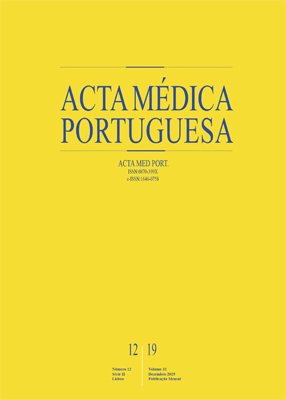Use of Anterolateral Thigh Free Flap in the Treatment of a Sternal Keloid
DOI:
https://doi.org/10.20344/amp.10955Keywords:
Free Tissue Flaps/transplantation, Keloid, Reconstructive Surgical Procedures, Sternum, ThighAbstract
Hypertrophic and keloid scars represent hyperproliferative disorders that can have a significant impact on patients’ lives. The authors present the case of a 53 years-old male with a sternal keloid after excision of a sebaceous cyst and multiple sessions of steroid infiltration, with worsening of the lesion. The patient underwent complete excision of the scar and reconstruction with an anterolateral thigh flap - ALT. The postoperative period was uneventful, with no signs of relapse. Keloid scar treatment in sternal area implies a reconstruction with no tension, in order to avoid relapse. Treatment of this type of scars is complex and a challenge to the plastic surgeon. In this case, a microvascular tissue transfer was used to reconstruct the large defect that ultimately resulted after scar excision, in a tension-free manner.
Downloads
Downloads
Published
How to Cite
Issue
Section
License
All the articles published in the AMP are open access and comply with the requirements of funding agencies or academic institutions. The AMP is governed by the terms of the Creative Commons ‘Attribution – Non-Commercial Use - (CC-BY-NC)’ license, regarding the use by third parties.
It is the author’s responsibility to obtain approval for the reproduction of figures, tables, etc. from other publications.
Upon acceptance of an article for publication, the authors will be asked to complete the ICMJE “Copyright Liability and Copyright Sharing Statement “(http://www.actamedicaportuguesa.com/info/AMP-NormasPublicacao.pdf) and the “Declaration of Potential Conflicts of Interest” (http:// www.icmje.org/conflicts-of-interest). An e-mail will be sent to the corresponding author to acknowledge receipt of the manuscript.
After publication, the authors are authorised to make their articles available in repositories of their institutions of origin, as long as they always mention where they were published and according to the Creative Commons license.









